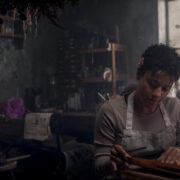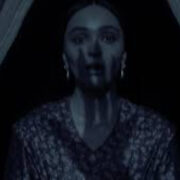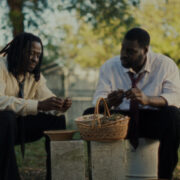Video Dispatches: MIKEY AND NICKY & Two Films By Joseph H. Lewis

Midwesterner, movie lover, cinnamon enthusiast.
Video Dispatches is a regular digest of recent home video releases.
My Name is Julia Ross (1945)
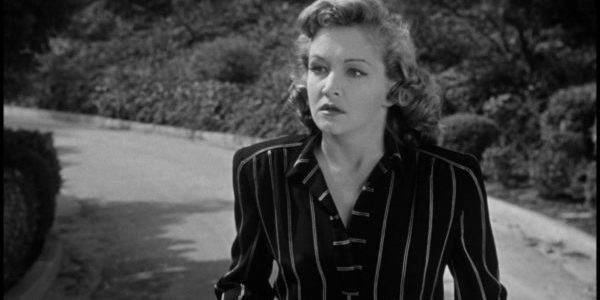
It’s hard to ask for anything more from My Name is Julia Ross, the film often considered the beginning of Joseph H. Lewis’ career as an auteur after years of making genre movies on Poverty Row (Bowery Boys films at Monogram, war movies and westerns at PRC and a film in the Falcon series for RKO). Opening on a woman crossing a London street in a sheet of rain, its mood is immediately gripping. Over the next 65 minutes, we follow the film’s namesake, Julia (played by Nina Foch), who’s archetypally new in town and looking for a job — in other words, ripe for the duping.
Arrow Academy, in the description of their new release of My Name is Julia Ross, posit the film as an antecedent for Alfred Hitchc*ck’s Vertigo and Brian De Palma’s Obsession for its noir-ish attributes and “identity-based deceptions.” I wouldn’t refute that, but the Hitchc*ck film I couldn’t get out of my head was Rebecca. Both thrillers, tightly composed, center on women confused at their place in a mansion up against a wave-crashing sea. What My Name is Julia Ross concedes in atmosphere to its forebearer it gains in taut, unfussy storytelling.
On the supplemental feature “Identity Crisis: Joseph H. Lewis at Colombia,” Nora Fiore (aka The Nitrate Diva) extrapolates My Name is Julia Ross’ social context and its place in the feminist canon. She explains in recent years, many women in the west had become comfortable in their transition to the workforce, but around this time, with men returning from war and taking back their place in labor, women were displaced, now relegated back to the home.
Lewis’ trim film works as a bitter allegory on this level, but the beauty of the film, written by Muriel Roy Bulton and sourced from Anthony Gilbert’s novel, is the characterization of the title character as one with agency — she isn’t a pawn in a didactic parable, but someone who knows the game and is trying to save herself.
So Dark the Night (1946)
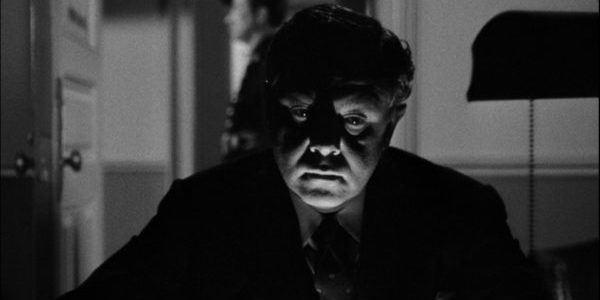
Lewis’ 1946 follow-up, So Dark the Night is also a compressed thriller — this one coming in at a modest 71 minutes — that finds a protagonist out of context. Here, we follow Henri Cassin (played by Steven Geray), a well-mannered Parisian detective on a mandated countryside vacation. After becoming embedded in a love triangle, Henri finds himself back on the clock, deciphering a mysterious and sudden murder.
The story funnels into a ludicrous, predictable twist of the type that became popular 60 years later in Hollywood. Thankfully, due to Lewis and his character actor lead, the rest of the film isn’t short on charm.
One can point to Lewis’ persistence to researching and commissioning a well-detailed French village on Columbia’s lot. He later told Peter Bogdanovich that despite having never been to the French countryside, when he came to work on So Dark the Night, he knew more about a French village than anybody who’d ever been born in one.
In Foster Hirsch’s book, Film Noir: The Dark Side of the Screen, he calls So Dark the Night Lewis’ breakthrough, saying the director didn’t manage “to overcome the burdens of shoddy formula scripts, or to forge a strong personal style, until noir assignments offered [him] visual and thematic challenges.”
I’m not exactly sure why he skips over My Name is Julia Ross, a film much richer in thematic challenges than this one, but perhaps it’s because So Dark the Night is a near-crystallization of Lewis’ visual preoccupations. Additionally, Hirsch thinks it’s “an ideal example of the opportunities for visual expressiveness which noir offers.” While My Name is Julia Ross is the more satisfying work, and certainly Gun Crazy his masterpiece, if you were tasked with choosing one to best display who Lewis was as a filmmaker, So Dark the Night might be the most indicative choice.
On the accompanying commentary of Arrow’s new release, alongside Farran Smith Nehme’s trivia treasure trove, Glenn Kenny brings no shortage of research specific to Lewis’ style, history and trajectory in Hollywood. After he made Gun Crazy, Lewis returned to making B pictures, which Hirsch attributes to a lack of “scrappy individuality” possessed by his colleagues Sam Fuller and Phil Karlson.
Mikey And Nicky (1976)
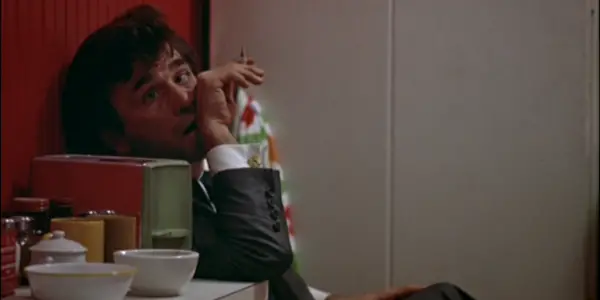
There are worse fates for directors than Lewis’ — churning out soulless, conveyer-belt product — and one need look no further than Elaine May, who, following the disastrous critical reception of her now-reclaimed fourth film, Ishtar, wasn’t to make another feature film again (if you discount the TV docuseries episode of American Masters she made on Mike Nichols). May, like Lewis, has also come into vogue of recent as a new generation (myself included) have discovered the incredible contribution to cinema she made over just four features between 1971-1987.
This February, the Criterion Collection released Mikey and Nicky, May’s third film, which marked an abrupt shift from her previous comedies into raw, emotional drama. The deviation here is mostly tonal as both A New Leaf and The Heartbreak Kid are both quite dark themselves, but there’s also a considerable aesthetic rendering here that wasn’t present in those other features. Matching the film’s emotional nerve, Victor J. Kemper’s cinematography captures a beautifully crude, rainy, neon-lit New York City that many of today’s young filmmakers — especially ones working primarily in urban spaces, like the Safdie Bros. — must be slack-jawed over.
Between the grainy, improvisational aesthetic and May’s casting of John Cassavetes and Peter Falk, one can’t help but think of Cassavetes own directorial work in reference or, as Richard Brody suggests on one of the supplemental features, in conversation with this one. The New York Times critic specifically posits Mikey and Nicky as the flipside of Cassavetes’ sophomore film, Husbands, which also stars himself and Falk (alongside Ben Gazzara) — May’s film also being a portrait of grieving, troubled brotherhood, but through a feminine lens.
It’s obviously insulting to reduce a film as special as this one down to a simple cinematic retort — with or without it’s dialogue with Cassavetes’ film, Mikey and Nicky is the more vital picture — but it’s an interesting vantage to approach May’s critical look at the toxic and fractured relationships between desperate and once-close men. As Brady also elucidates on, her filmography is thematically spined by betrayal, and while I think The Heartbreak Kid is May’s crowning achievement, this one most exemplifies her dominant preoccupation.
Does content like this matter to you?
Become a Member and support film journalism. Unlock access to all of Film Inquiry`s great articles. Join a community of like-minded readers who are passionate about cinema - get access to our private members Network, give back to independent filmmakers, and more.


